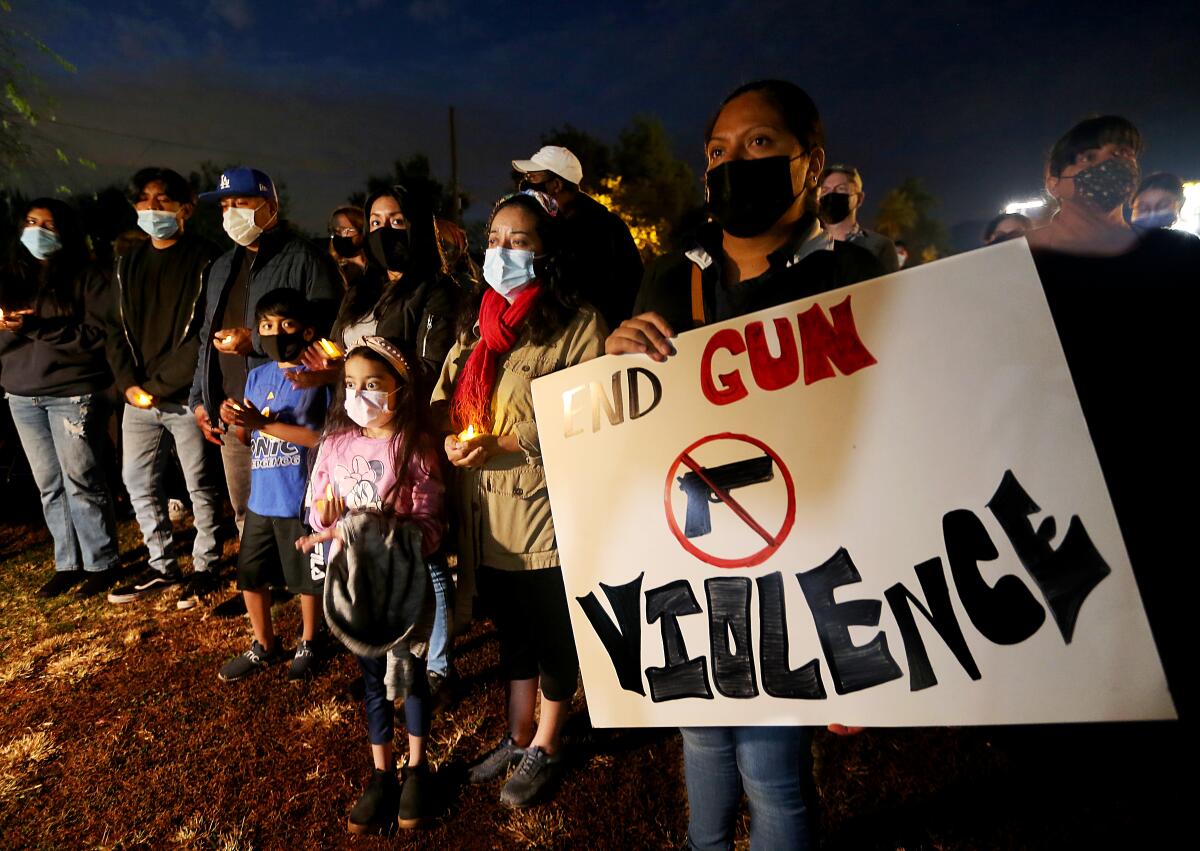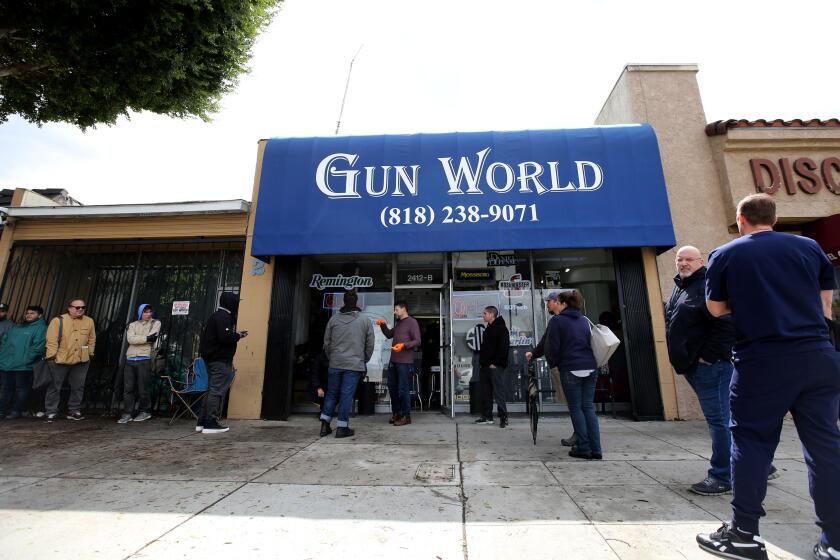Opinion: Guns are the biggest public health threat kids face. Why aren’t we warning them?

- Share via
I still remember the raspy voice of the wizened cancer patient with the hole in her throat. So addicted to the poison that was killing her — cigarettes — she interspersed her words of warning about the dangers of smoking with taking puffs of a cigarette through her tracheostomy hole.
It was a short, disturbing public service video shown in my sixth grade classroom as part of an anti-smoking campaign linked to a recently released U.S. surgeon general’s report, which for the first time officially linked smoking to cancer and heart disease.
That night, I flushed my father’s cigarettes down the toilet. The woman’s image haunted my nightmares for years. After seeing that video, I never lighted up.
Today that kind of video would probably not make it into the classroom, deemed inappropriate for preteens, too triggering.
As our youth grapple with exposure to gun violence during formative years, schools and governments must implement better long-term mental health care to assist them.
But that’s arguably just the kind of aggressive messaging campaign — particularly aimed at young people — we need right now to combat what has become the country’s No. 1 public health threat for American youth: guns.
Firearms became the leading cause of death among those 19 and younger in 2020, owing to a dramatic spike in youth gun violence deaths during the pandemic. The gun homicide rate in the U.S. for people ages 15-24 was already 49 times as high as in other developed nations more than a decade ago. It’s a racial justice issue too. Black males 15 to 34 are more than 20 times more likely to be a victim of gun homicide than their white counterparts.
Though much of the media attention surrounds mass school shootings and the proliferation of semiautomatic weapons, handguns were used in 59% of murders and “non-negligent manslaughters.” Most gun homicides involve the shooting of a small number of people, the “ones and twos.”
Little national data are available on the age of the perpetrators of this day-to-day violence, but there is evidence they are getting younger. Where I live, in Washington, 40% of suspects in shootings were 18-24 years old and 11% were under age 17, according to a 2021 report.
Baback Sarani, co-chief of trauma surgery at George Washington University Medical Center, tells of how he’d treated one teenager four times since 2018 for gunshot wounds, until the young man died after being shot in November, at 19.
In response to rising gun violence, Congress last year passed its first gun safety measure in decades and more than 500 state gun safety measures have passed in the last decade.
But the carnage continues, and laws alone are unlikely to stop it, with gun ownership protected in some form by the 2nd Amendment and a Supreme Court that takes a broad view of what that means. The year 2020 saw the largest number of gun sales in the nation’s history. Our country is supersaturated with weapons.
Despite all that, one important lever remains oddly underutilized: using the media, social media and the entertainment industry to rebrand guns from symbols of status, power and personal freedom to ones of death and carnage.
Mass shooters often tip their hands with spending patterns leading up to their crimes. Financial companies have long watched for such aberrations, thanks to the Patriot Act. Future red flags should be reported.
Gun manufacturers, following the playbook of tobacco companies in the 1940s and 1950s, have fostered a positive image for deadly weapons among young Americans, particularly men. And they have had collaborators in the process — violent films, TV shows and video games that glorify and glamorize weaponry.
Smoking was normative in America until public health officials took it on. What allowed smoking bans in public places to gain traction was decades-long public health work to re-image the cigarette — frequently and forcefully — by officials like Surgeon General C. Everett Koop.
The anti-smoking campaigns depicted the health scourge with images and language that were often deeply disturbing. That message was then echoed by public service announcements featuring celebrities from sports and films. Research has found that such emotionally charged ads can work in smoking cessation.
Today we recognize guns as a public health threat. So it’s time to act with the same kind of visceral public campaign that put my dad’s cigarettes into the toilet.
Today’s public service announcements on gun safety feel somewhat sanitized. None really captures the horrifying physical and emotional damage caused by guns. Maybe if we showed the public what it looks like when a kid is shot, the shock and disgust — a view of the reality — would counter the social glamour of guns.
The airwaves and social media channels are filled with messages urging young people to attend to their mental health. Where are the ads saying it’s not cool to pack a pistol? Will filmmakers commit to making action movies without guns, just as filmmakers stopped making smoking sexy in films?
There will, of course, be debate about whether the images of gunfire and bodies would be traumatizing, especially to kids and victims’ families. But some may feel differently. Emmett Till’s mother demanded that his body be displayed in an open coffin because “everybody needed to know what happened to Emmett Till.” Disturbing images have proved powerful in awakening public outrage and prompting action: The horrific video of George Floyd’s murder lent fuel to the Black Lives Matter movement.
If we want gun violence to end, there may be little choice but to show the public the true damage of guns in all its ugliness and brutality.
Elisabeth Rosenthal, a physician, is editor in chief of Kaiser Health News and the author of “An American Sickness: How Healthcare Became Big Business and How You Can Take It Back.”
More to Read
A cure for the common opinion
Get thought-provoking perspectives with our weekly newsletter.
You may occasionally receive promotional content from the Los Angeles Times.












